Orpak Systems 813207300 DATAPASS User Manual 1
Orpak Systems Ltd. DATAPASS 1
User Manual
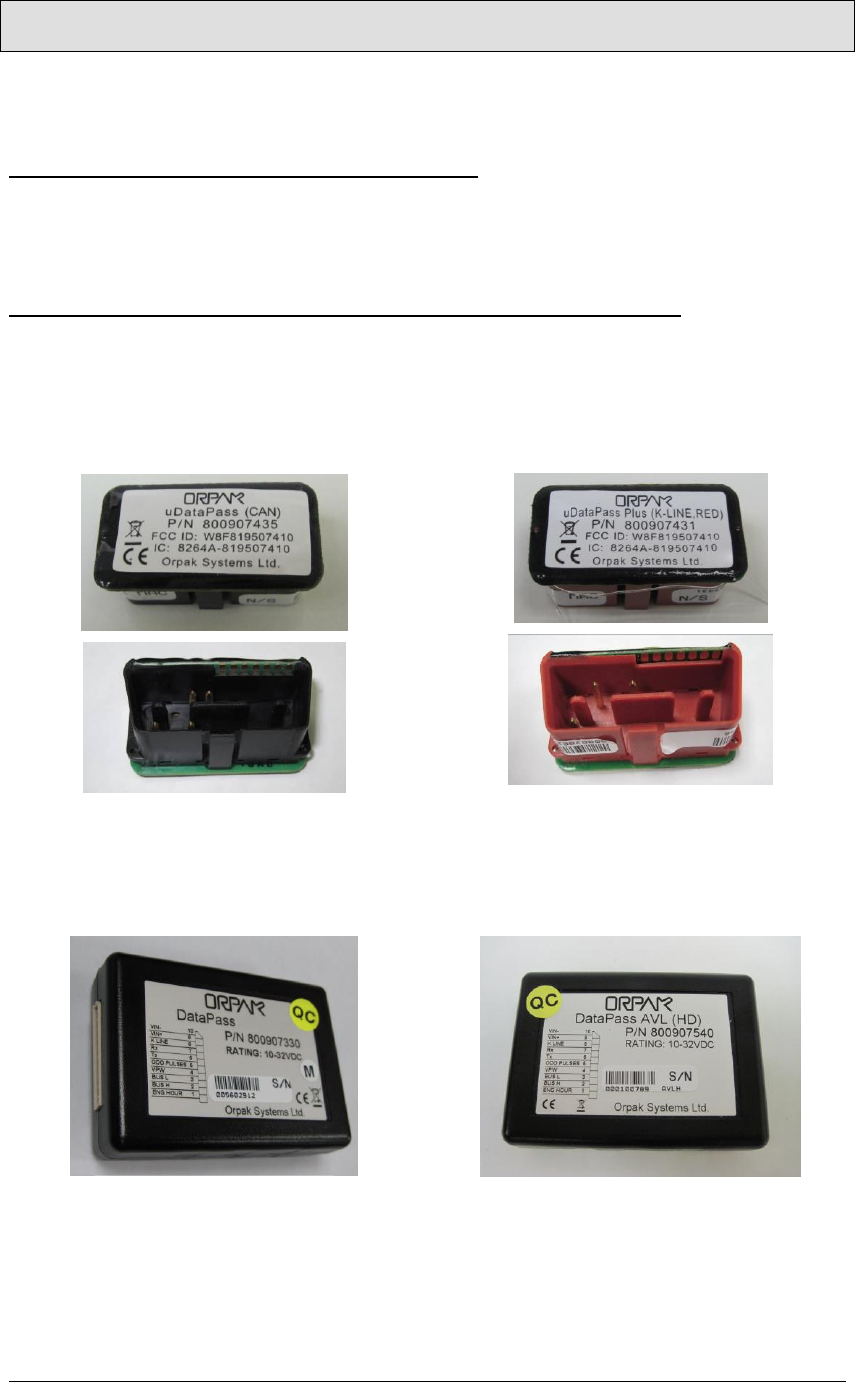
FCC Compliance Statement for DataPass/µDataPass 1
DataPass & µDataPass
P/N 817407400
Rev A2
1. SCOPE
This document provides a general and functional description of the DataPass and
µDataPass units.
2. DATAPASS & µDATAPASS DESCRIPTION
DataPass and µDataPass are miniature units that connect to the vehicle bus and
capture data from the vehicle CPU/BUS. They then transmit this data to the nearest
Wireless Gateway in the forecourt. Two unit types are available for the installer (see
Figure 1 and Figure 2):
µDataPass (CAN) for CAN Bus Protocol
µDataPass (k-line) for K-line Protocol
Figure 1. µDataPass
DataPass for Light Vehicles (OBD-II)
DataPass AVL for Heavy Vehicles
Figure 2. DataPass
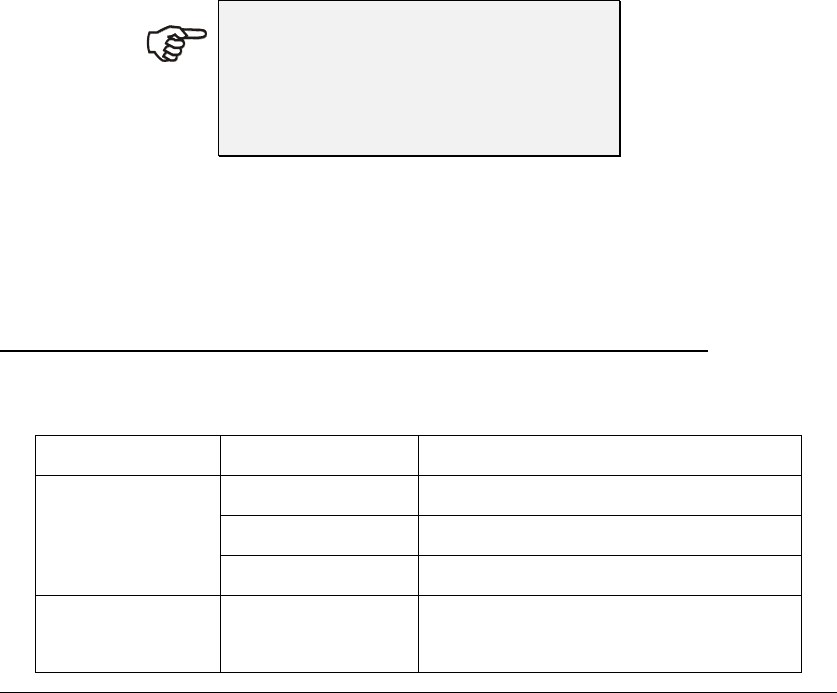
FCC Compliance Statement for DataPass/µDataPass 2
µDataPass – a connector shaped unit that plugs into the vehicle On Board
Diagnostics connector (OBD II) and intended for light and commercial vehicles which
has OBD II connector. The following µDataPass types are available:
µDataPass CAN, P/N 800907435
µDataPass K-Line, P/N 800907436
µDataPass Plus CAN, P/N 800907430
µDataPass Plus K-Line, P/N 800907431
DataPass - connected directly to the vehicle bus harness, used in heavy and light
vehicles and supports most common bus protocols.
The following DataPass types are available:
DataPass Heavy, P/N 800907340
DataPass Light, P/N 800907330
DataPass Plus Heavy, P/N 800907310
DataPass Plus Light, P/N 800907300
DataPass AVL Heavy, P/N 800907540
DataPass AVL Light, P/N 800907541
N
NO
OT
TE
E
Please check the manufacturer
specifications for the proper protocol
supported by the Vehicles in your
fleet!
The DataPass is installed using the provided DataPass harness. The harness is
installed inside the driver cabin, behind the dashboard and connects to the vehicle's
diagnostics connector in light vehicles, or to the diagnostics plug rear wiring in heavy
vehicles.
3. DATAPASS – TECHNICAL SPECIFICATION
Table 1 lists the specifications for the DataPass units.
Table 1. DataPass Specifications
Parameter
Value
Physical
HxWxD
15x70x21 mm
Weight
45g
Connectors
562810 Molex
Electrical
Supply voltage
Normal operation: 12VDC (Nominal)
Minimum: 10 VDC
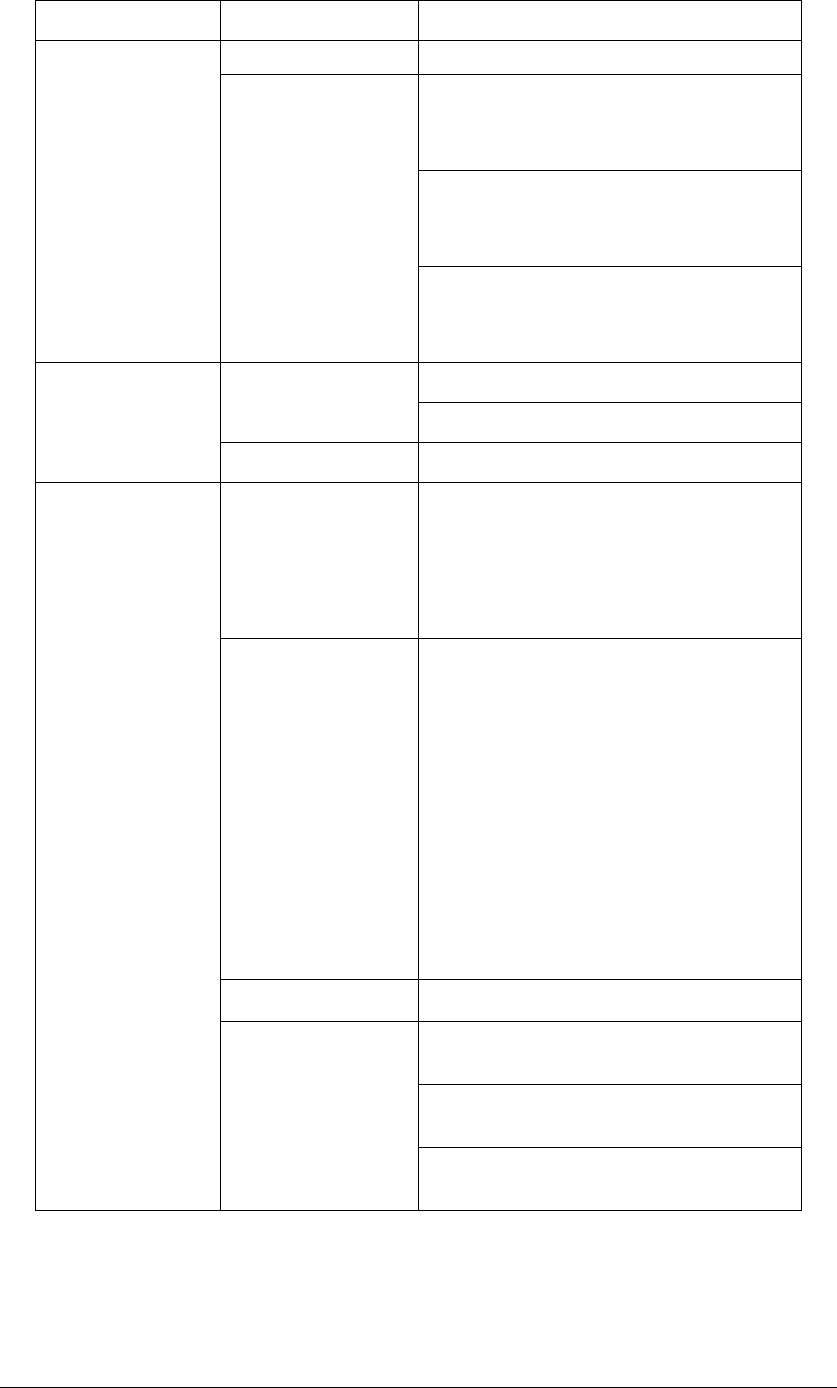
FCC Compliance Statement for DataPass/µDataPass 3
Parameter
Value
Maximum: 32 VDC
Current consumption
(typical)
KLINE Mode:
Sleep mode: 5mA
Active mode: 35mA
CAN Mode:
Sleep mode: 5mA
Active mode: 25mA
J1708 Mode:
Sleep mode: 5mA
Active mode: 25mA
Environmental
Conditions
Temperature Range
Operating: -40 to +70 ºC
Storage: -40 to +85 ºC
Humidity
95% non-condensing
Communication
Wireless Interfaces
Single IEEE802.15.4 wireless channel
Operating Frequency:
ISM 2.405 to 2.480 GHz (Global
license free band)
Implements proprietary mesh network
IEEE802.15.4
Modem
DSSS/FA – Direct Sequence
Spread Spectrum with Frequency
Agility
Supported network topologies:
Propriety mesh network
Channel capacity:
16 frequency channels / 5MHz
channel spacing
Transmit power output:
2mW (3dbm)
Receive sensitivity:
-101dbm
Wireless Antenna
Built in PCB Antenna
Wired Interfaces
OBDII – J2284/ISO15765 (CAN BUS)
Data rate: 250Kbps / 500Kbps
OBDII – ISO14230/ISO9141 (KLINE)
Data rate: 10400bps
J1708/J1587
Data rate: 9600bps
Table 2 lists the specifications for the μDataPass units.
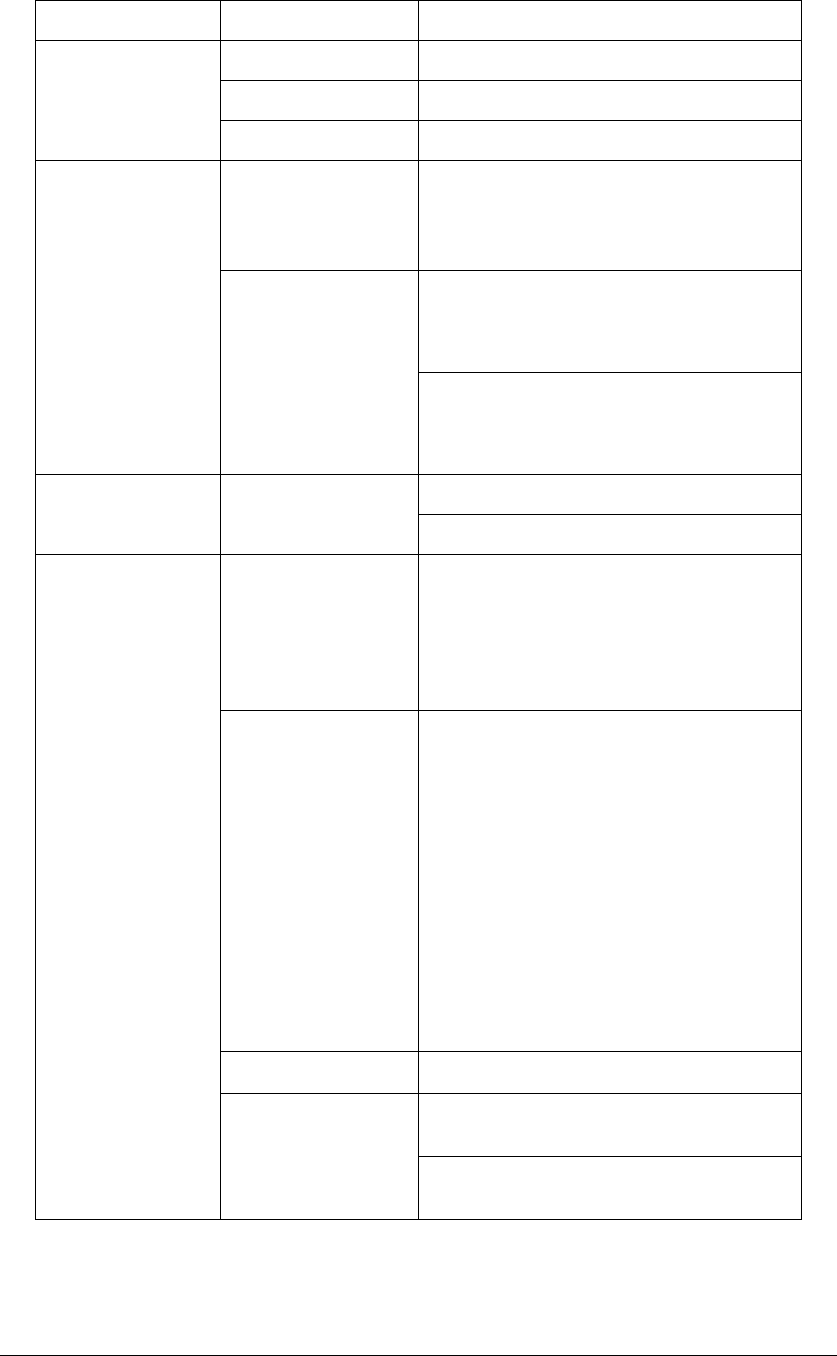
FCC Compliance Statement for DataPass/µDataPass 4
Table 2.μDataPass Specifications
Parameter
Value
Physical
HxWxD
22x70x17 mm
Weight
10g
Connectors
OBDII compatible (male)
Electrical
Supply voltage
Normal operation: 12VDC (Nominal)
Minimum: 10 VDC
Maximum: 32 VDC
Current consumption
(typical)
KLINE Interface:
Sleep mode: 4mA
Active mode: 35mA
CAN Interface:
Sleep mode: 4mA
Active mode: 25mA
Environmental
Conditions
Temperature Range
Operating: -40 to +70 ºC
Storage: -40 to +85 ºC
Communication
Wireless Interfaces
Single IEEE802.15.4 wireless channel
Operating Frequency:
ISM 2.405 to 2.480 GHz (Global
license free band)
Implements proprietary Mesh network
IEEE802.15.4
Modem
DSSS/FA – Direct Sequence
Spread Spectrum with Frequency
Agility
Supported network topologies:
Propriety Mesh network
Channel capacity:
16 frequency channels / 5MHz
channel spacing
Transmit power output:
2mW (3dbm)
Receive sensitivity:
-101dbm
Wireless Antenna
Built in PCB Antenna
Wired Interfaces
OBDII – J2284/ISO15765 (CAN BUS)
Data rate: 250Kbps / 500Kbps
OBDII – ISO14230/ISO9141 (KLINE)
Data rate: 10400bps

FCC Compliance Statement for DataPass/µDataPass 5
FCC COMPLIANCE STATEMENT IN USER'S MANUAL
This device complies with part 15 of the FCC rules. Operation is subject to the
following two conditions: (1) this device may not cause harmful interference, and (2)
this device must accept any interference received, including interference that may
cause undesired operation.
For a Class A or Class B digital device or peripheral, the instructions GIVEN to the
user shall include the following, or a similar statement should be placed in a
prominent location in the text of the manual (Section 15.105).
The User’s Manual or Instruction Manual for an intentional or unintentional radiator
shall caution the user that changes or modifications not expressly approved by the
party responsible for compliance could void the user’s authority to operate the
equipment. (from FCC rules 15.21):
Sample user information for a Class A digital device:
THE FCC WANTS YOU TO KNOW:
This equipment has been tested and found to comply with the limits
or a Class A digital device, pursuant to part 15 of the FCC Rules. These
limits are designed to provide reasonable protection against harmful
interference when the equipment is operated in a commercial environment.
his equipment generates, uses, and can radiate radio frequency energy
and, if not installed and used in accordance with the instruction manual,
ay cause harmful interference to radio communications. Operation of this
equipment in a residential area is likely to cause harmful interference in
which case the user will be required to correct the interference at his
own expense.
FCC Warning
Modifications not expressly approved by the manufacturer responsible
could void the user’s authority to operate the equipment under FCC
rules.
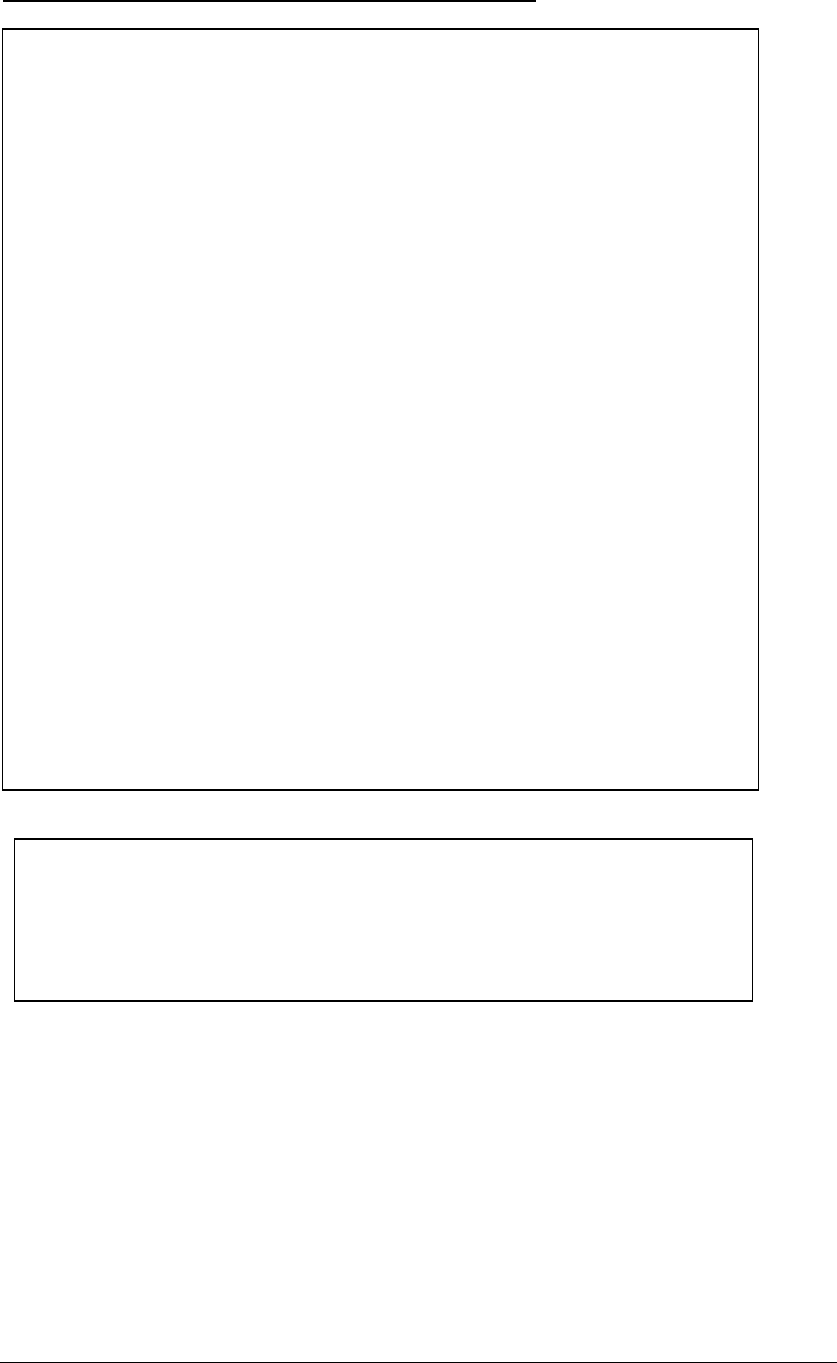
FCC Compliance Statement for DataPass/µDataPass 6
Sample user information for a Class B digital device
THE FCC WANTS YOU TO KNOW:
This equipment has been tested and found to comply with the limits
for a Class B digital device, pursuant to part 15 of the FCC Rules. These
limits are designed to provide reasonable protection against harmful
interference in a residential area.
This equipment generates, uses, and can radiate radio frequency energy
and, if not installed and used in accordance with the instructions,
may cause harmful interference to radio communications. however, there is
no guarantee that interference will not occur in a particular installation. if
this equipment does not cause harmful interference to radio or television
reception, which can be determined by turning the equipment off and on,
the user is encouraged to try to correct the interference by one or more of
the following measures:
Reorient or relocate the receiving antenna
Increase the separation between the equipment and the receiver
Connect the equipment to an outlet on a circuit different from that
to which the receiver is connected
Consult the dealer or an experienced radio/TV technician
FCC Warning
Modifications not expressly approved by the manufacturer responsible
could void the user’s authority to operate the equipment under FCC
rules.